calsfoundation@cals.org
Woodruff County Courthouse
The Woodruff County Courthouse is located in Augusta (Woodruff County), on the northern end of 3rd Street not far from the White River. The Woodruff County Services Center stands behind the courthouse, and the historic Augusta Memorial Park is less than a mile away, but it is the residential homes from different eras that define the local identity. The Arkansas Historic Preservation Program recognizes the Woodruff County Courthouse as historically and architecturally significant, and it was added to the National Register of Historic Places on December 22, 1982.
In November 1862, the Arkansas General Assembly officially established Woodruff County with Augusta as its county seat, although the ongoing Civil War complicated plans. Many residents joined the Confederate army, the state diverted resources to the war effort, and fighting occurred in the area, including in Augusta. Woodruff County was finally organized formally in 1865 after the war.
Augusta has hosted four courthouses over the years, along with court sessions in Cotton Plant (Woodruff County) and McCrory (Woodruff County) out of convenience for those residents. Augusta’s first courthouse was a modest, wood-frame building. It existed for a short time, as the county moved into a larger two-room wooden structure in town. In April 1870, Augusta founder Thomas Hough sold his residence to the county for $28,000, and it became the third courthouse. It stood on the site of the current Woodruff County Courthouse and was a two-story residence made of brick. It featured a wide lawn, which once served as Union general Frederick Steele’s camp in July 1862 before a march to Helena (Phillips County).
By 1901, Woodruff County services outgrew the Hough house, leading to its demolition. County officials appointed T. H. Connor as a building commissioner for a new and final courthouse in Augusta, and a courthouse in Cotton Plant to serve southern Woodruff County. The county appropriated $44,000, including $30,000 for the Augusta building. Charles L. Thompson, a prolific Arkansas architect, drew the plans for both projects.
Thompson planned the Augusta courthouse in the Richardsonian Romanesque style, an eclectic design named after the work of architect Henry Hobson Richardson. Connor awarded the contract to build the structure to C. W. Clark of Little Rock (Pulaski County). On the exterior, its most distinctive feature is a clock tower that crowns the pressed-brick building, along with the pyramidal and high-hipped roofing. Inside, a multicolored tile mural covers the main level, and pine wainscoting adorns the second-floor courtroom. The building opened in December 1902 with much fanfare. “To say it is a beauty is putting it very mildly,” the Arkansas Democrat reported. Judge E. D. Robinson started the building’s first court session with sixty-eight cases on the docket, including thirty-eight filings for divorce. The Woodruff County courthouse in Cotton Plant opened in August 1902, although it is no longer standing.
The Arkansas Historic Preservation Program, through its County Courthouse Restoration Grant Program, has awarded eleven grants for the further preservation of the Woodruff County Courthouse. This includes over $578,000 for installing an elevator, as well as restoring the masonry and roof.
For additional information:
“38 Divorce Cases.” Arkansas Democrat, December 5, 1902, p. 1.
“Augusta on Boom.” Arkansas Democrat, November 10, 1902, p. 7.
Gill, John Purifoy, and Marjem Jackson Gill. On the Courthouse Square in Arkansas. N.p.: 1980.
Goodspeed Biographical and Historical Memoirs of Eastern Arkansas. Easley, SC: Southern Historical Press, 1978.
“Two Court Houses.” Arkansas Democrat, July 9, 1902, p. 7.
“Woodruff County Courthouse.” National Register of Historic Places nomination form. On file at Arkansas Historic Preservation Program, Little Rock, Arkansas. Online at http://www.arkansaspreservation.com/National-Register-Listings/PDF/WO0004.nr.pdf (accessed May 22, 2017).
Jared Craig
Arkansas Historic Preservation Program


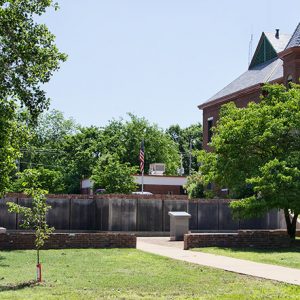
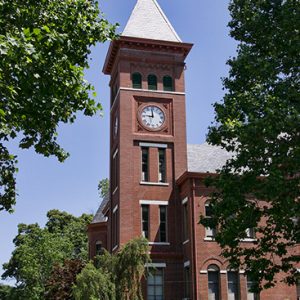
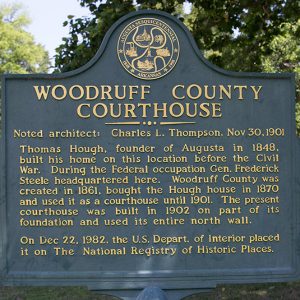
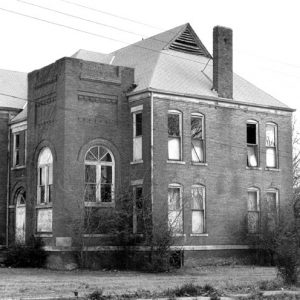
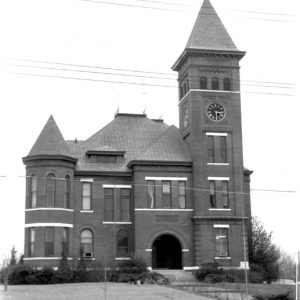




Comments
No comments on this entry yet.